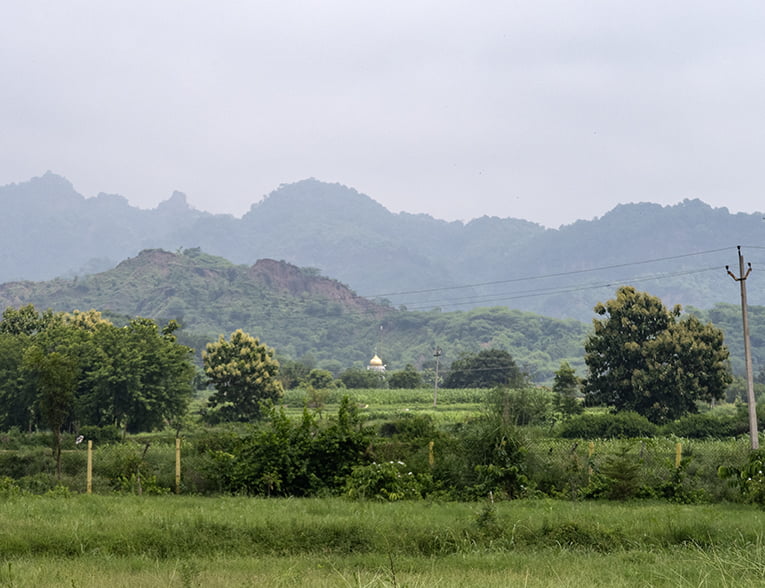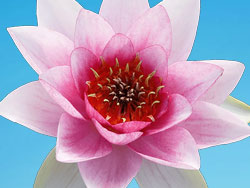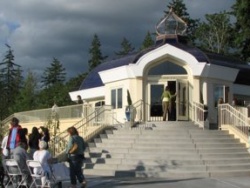Dear Friends of Ananda India Monastery,
The India monastery has been granted official approval for a Change of Land Use (CLU) for our Hermitage land! What was previously “forest/agricultural” land is now classified as “institutional” land. That means we can legally and properly build an Ananda India monastery.
Many people considered this step an impossibility when we began the process. It took one year and nine months of frequent visits to government offices by our monks, many legal and land documents, and a great deal of expert help. Thanks go to many, especially Amit Purohit, who persuaded us to take this route and helped to make it happen.
Guru Kripa Forest Hermitage, as it will be called, consists of 5 1/2 acres of beautiful fertile land just 1km from the Shivalik Hills — the foothills which begin the Himalaya range in north India. The land is about one hour from Chandigarh. There are no residences yet on the land, only a large tool/storage shed which we built. Our nine monks are currently renting houses about 40 minutes from the land. The Hermitage will fulfill Swami Kriyanandaji’s vision of a place just for monks, to live and serve, and to come for training.
We will begin sending more frequent updates now that this necessary step has been taken.
Our Next Steps
We need to submit a site plan and have it approved before we can begin construction. Our advisers tell us that process is far easier and faster than the CLU. We’ve already made a great deal of progress with developing a site plan, working closely with our team of architects.
During the last two years we have been improving the land by planting over 100 trees, hundreds of bougainvillea vines to cover the perimeter fence, and regular cover cropping to improve the soil. We will be planting many more trees as we develop a Forest Hermitage that will use permaculture forest principles. This will provide an ideal environment for monks to live in harmony with nature, while continuing to support the monastery’s far-reaching online work and travels. Even though farming and agriculture will not be the main purpose, it will provide food and a healthy lifestyle.
Our Development Team
The last two years have seen the growth of a talented and harmonious team working together on designing the buildings and landscape. Our friends at Studio Lotus (www.studiolotus.in) have been graciously donating their professional and enlightened architectural and site design. That firm was founded by Ambrish Arora, an Ananda Delhi member. Hari Sudhan, a good friend and part of the team of acharyas at Ananda Delhi’s Panchsheel Park center, has also been working closely with us. He was a trained and practicing architect before joining Ananda, with unique experience in the natural earth building practices we will be using. Nayaswami Shankara has led building projects in the U.S. and India.
My (Devarshi) years of experience with natural/organic gardening and landscaping in the U.S. are now being enhanced with natural growing methods in the context of India by our good friends and close neighbors at Aanandaa Permaculture Farm (www.aanandaa.com). Our monks too are beginning to learn from the planting and care of trees, working at improving the soil, and some small test plots of food. We also have a very capable local onsite manager for everything relating to the land, trees, construction, and more.
Please visit www.studiolotus.in and w
Guru Kripa Forest Hermitage
Guru Kripa means “Guru’s Grace,” and is the name Swami Kriyanandaji gave to his first home in India. It describes the grace and miracle filled journey that has led to Ananda Sangha India purchasing land, getting legal permissions, and developing an amazing team.
The Hermitage will include kutirs (small cottages) for monks, a temple for daily meditation, offices for our online work, and a kitchen and dining hall. There will be abundant vegetable plots, along with many varieties of fruit trees and native trees. We already have planted some mango, litchi, and guava trees, along with many native trees for windbreak and privacy.
For Inspiration
In August we will have a ceremonial planting of a “Triveni.” This is a traditional planting of the three most sacred trees in India: Pipal, Banyan, and Neem. Temples and villages all used to have this planting, where the three trees are grown with their trunks touching each other. The three trees represent the Hindu trinity of Brahma, Vishnu, and Shiva. The triveni will be right next to where our temple will be built. A triveni planting is said to have the power to accelerate the spiritual growth from sadhana performed under the trees.
The Banyan seedling we’ll plant in the Triveni has a unique and blessed history. Last October some of us went on a pilgrimage to Serampore, near Kolkata, with Nayaswamis Jyotish and Devi, spiritual directors of Ananda Sangha worldwide. One day we visited Rai Ghat, where there is a Banyan tree that features prominently in Autobiography of a Yogi. Mahavatar Babaji miraculously appeared to Sri Yukteswar under that tree — many Ananda pilgrims visit there each year.
I was able to collect some seeds from the falling fruit. The seeds were planted and have given us a few Banyan seedlings. One of them will be part of the Triveni, and a first-generation child of the Babaji Banyan Tree. You can see our seedling in the picture below — it is in the reddish pot to the left of the photo.
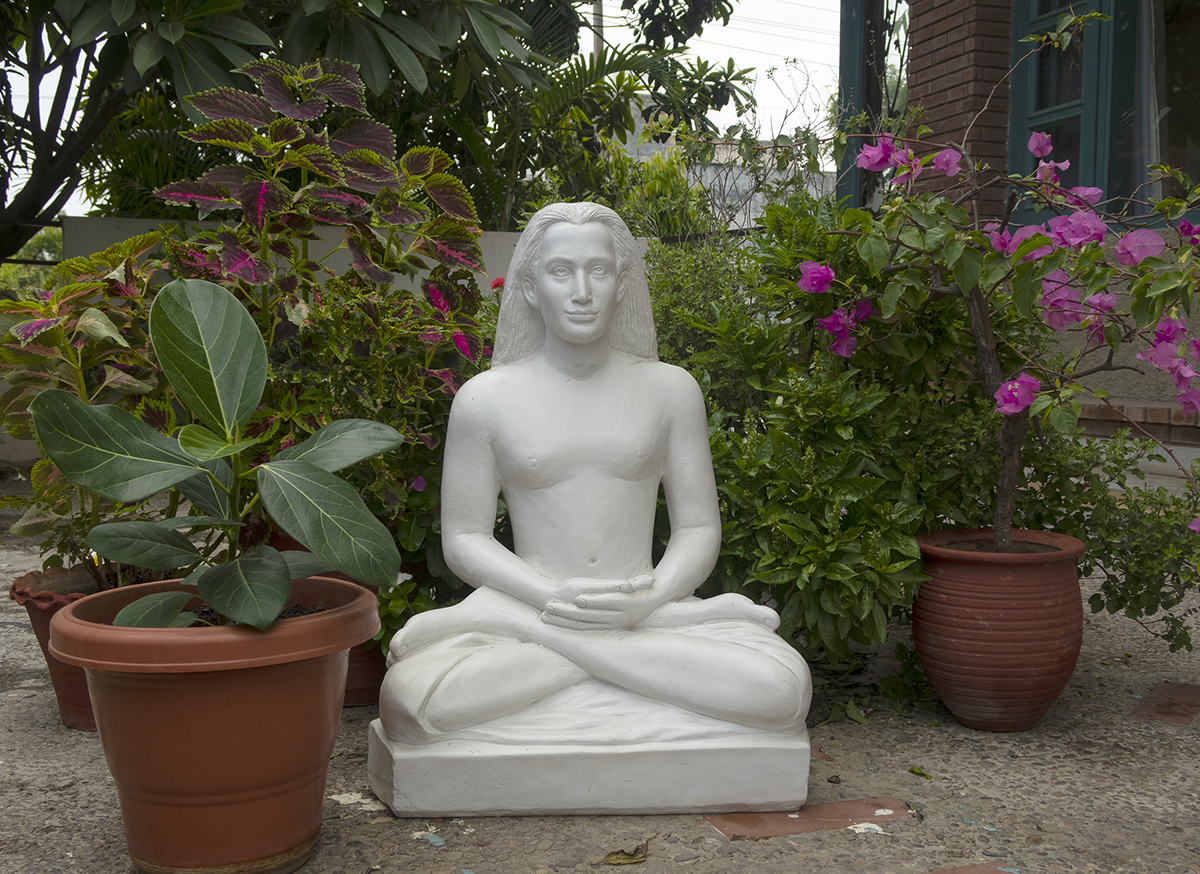
(More photos below)
We thank you for all your prayers, support, patience, and trust these last two years. This miraculous journey would not be possible without the grace that comes from the Guru, often through all of you. There is much more to tell of this story up to this point, and much more to come. We will begin to update you more regularly.
With gratitude,
Nayaswami Devarshi
Swami Kriyanandaji, on the building of Ananda Village:
“It was because I was trying to work in attunement with them (the Gurus) that many miracles have happened along the way. God had only to withhold one important miracle for Ananda not to exist anymore. It has taken divine help, and lots of it, but it’s also taken our willingness and dedication.”
Brahmachari Premdas with Sainki, our farm manager. Some of the trees planted last year are over 12 feet tall.

Solar panels on the storage shed roof. These will eventually power the well pump. Our well was tested at 300 gallons per minute!
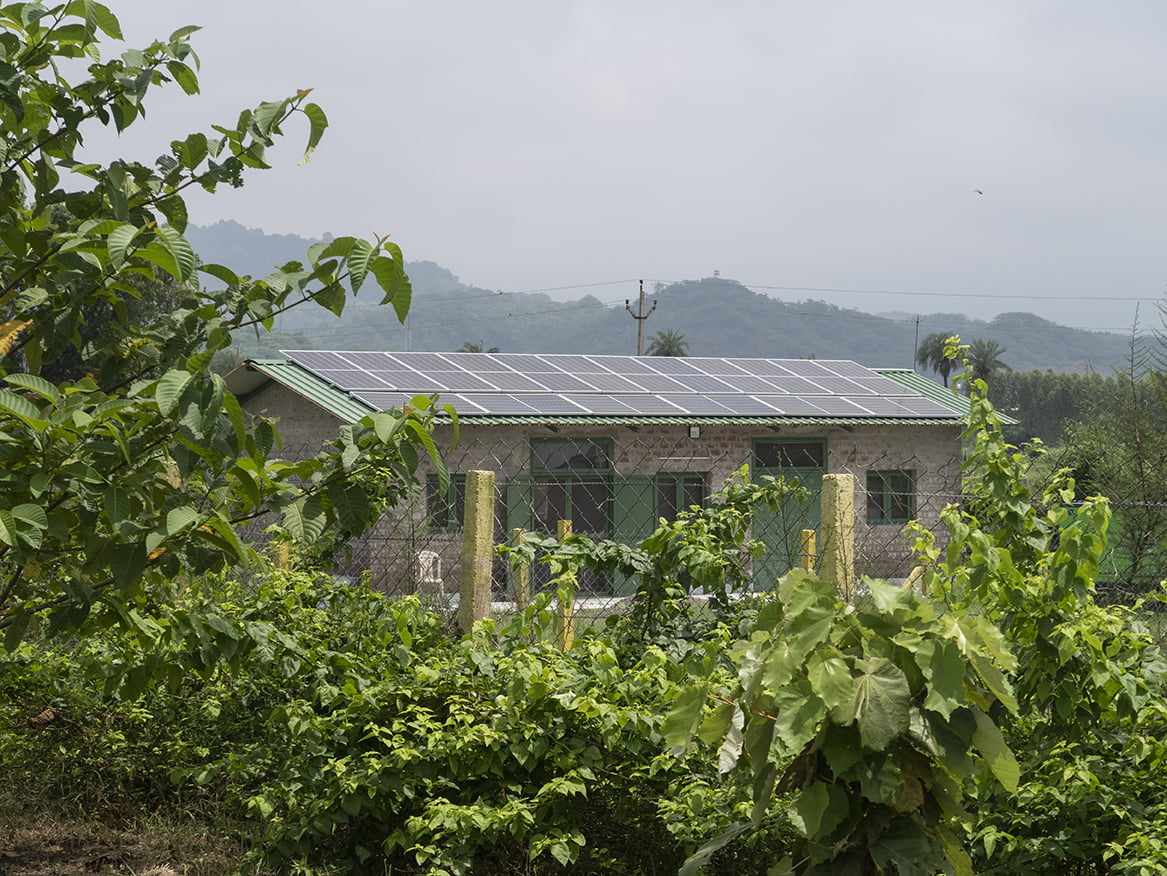
Nearby temple as seen from the Hermitage
